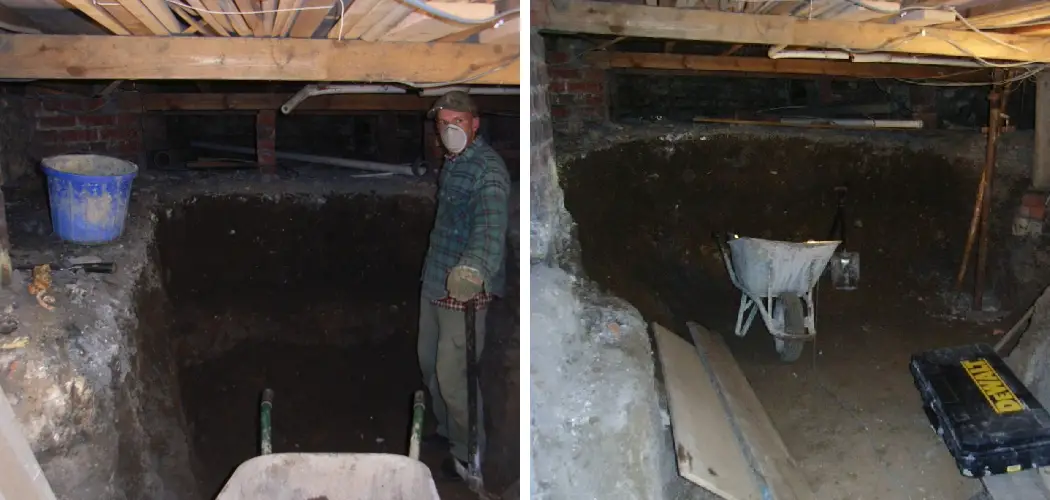Digging a basement under your house can bring many benefits. Basements provide additional living space, which is increasingly valuable in the current market. Installing a basement also increases the value of your property and allows you to customize it with features such as a home theater, wet bar, or wine cellar. On top of that, basements offer increased protection from floods, tornadoes, and other natural disasters.
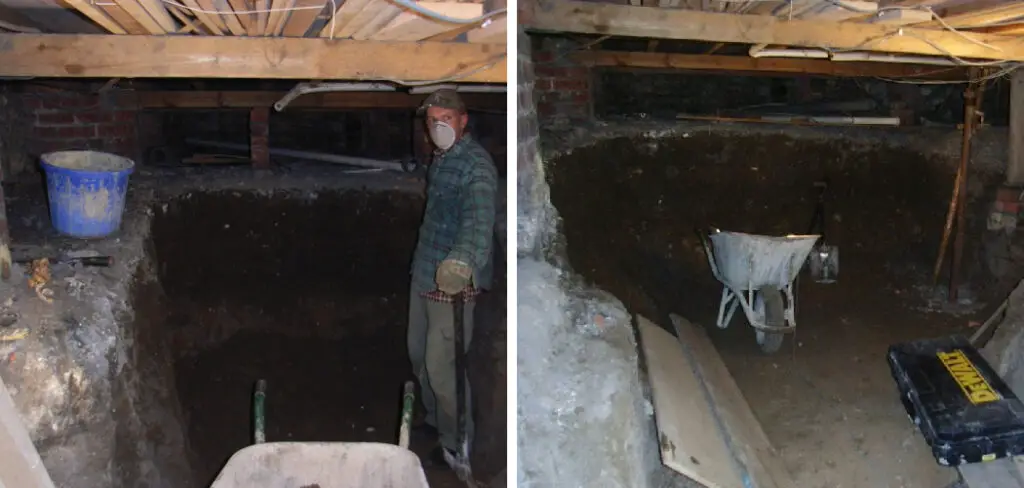
One of the primary advantages of digging a basement under a house is that it provides additional living space. This is especially useful if you have an expanding family or are looking for extra storage, office, or recreational space. Having a basement also enhances the property value since it increases the square footage of your home and makes it more appealing to potential buyers. In this blog article, you can find step-by-step instructions on how to dig a basement under a house.
How Deep Should You Dig for Your Basement Project?
The depth of the excavation will depend on the type of house, how much space you need, and any local building codes that may be in place. Generally speaking, basements should be at least 8 feet deep or more. However, if your area has a high water table or is prone to flooding, you may want to increase the depth accordingly.
In addition to the depth of your excavation, you also need to consider how wide it should be. A basement for a two-story house should typically be at least 8 feet wide and 10 feet high, while a basement for a one-story home could be as narrow as 5 feet wide by 7 feet high. You’ll want to leave enough room for utilities and adequate headroom.
What Type of Materials Should You Use to Create a Solid Foundation for Your Basement?
- Invest in Concrete and Steel Reinforcements: A basement will only be as stable as its foundation. Concrete, when combined with steel reinforcements, ensures maximum support and stability for the structure.
- Avoid Settling Issues With Proper Drainage: Ensure adequate drainage is installed so that water can drain away from your home. Without proper drainage, dirt and debris can cause settling issues over time.
- Insulate the Basement Walls and Floors: Properly insulating your basement will help keep it warm in the winter and cooler during the summer months, plus it will also prevent moisture from entering the home.
- Install a Vapor Barrier: A vapor barrier helps to reduce condensation buildup in the basement. It is especially important in areas with high humidity levels.
- Seal Cracks and Crevices: Caulk or sealant should be applied around windows, doors, and other penetrations to help keep out moisture and bugs.

By preparing your home for a basement properly, you will ensure that your basement will be a safe and stable living space for years to come. With the right materials and installation methods, you can rest assured that your new basement will provide many years of comfortable use.
Step-by-step Instructions for How to Dig a Basement Under a House
Step 1: Inspect the Foundation
Make sure your home’s foundation is strong and sturdy before you start digging. You can consult a structural engineer if needed to check for any cracks, erosion, or other potential issues that could be exacerbated by digging. Make sure you know where your property line runs so that you don’t accidentally dig too far and infringe upon your neighbor’s property.
You Can Check It Out to Dig Out a Basement in an Existing House
Step 2: Choose How Deep You Want to Dig
Since the deeper you dig, the more expensive and complicated it will be to build a basement, you should decide how deep your basement needs to be. You’ll want to ensure there will be enough room for everything you plan on having in your basement, like pipes for plumbing or a heating system.
Step 3: Create a Plan for How to Dig
You’ll need to devise a plan on how you will be digging the basement, including where the entrance and exit points for your equipment will be and a timeline for completing each step in the process. Make sure utilities like gas or electric lines in the ground are marked before you start digging.
Step 4: Contact Your Local Building Authority or Utility Company
Depending on where you live, you may need to contact your local building authority or utility company to obtain a permit and discuss any safety measures that should be taken during the process. This is especially important if you are digging near any gas lines or other utility lines.
Step 5: Start Digging:
Once you have obtained the necessary permits and taken the proper safety precautions, you can begin digging your basement. You’ll want to use a backhoe or excavator to dig out the area, and then reinforce it with heavy-duty steel beams or timber. Make sure you have a plan in place to dispose of the dirt and debris safely and legally.
You Can Check It Out to Install a Shower in the Basement Without Breaking Concrete
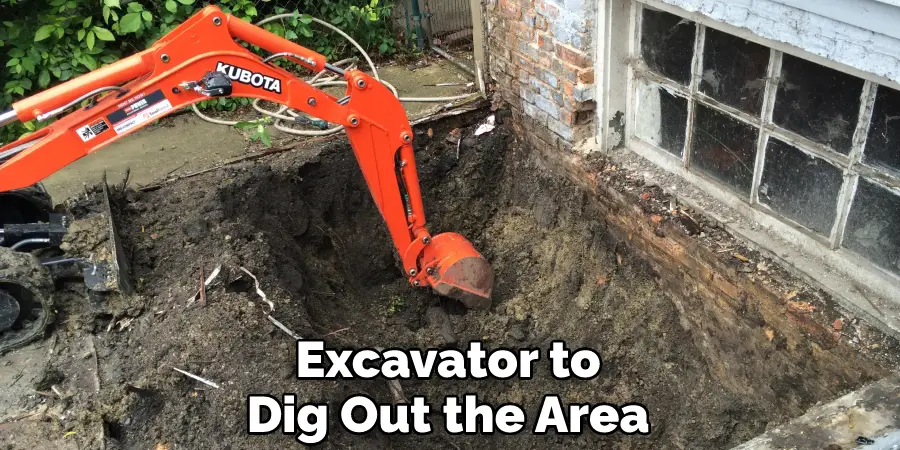
Step 6: Pour Concrete Footings and Walls
Once the excavation process is complete, it’s time to pour concrete footings and walls, providing structural support for your basement. You’ll want to ensure that your foundation is level, and then use a waterproof material like concrete or cinder blocks to build your walls.
Step 7: Finish the Basement Interior
Once the exterior of the basement is complete, you can begin working on finishing the interior. This includes installing insulation, drywall, electrical wiring, plumbing, and heating and cooling systems. You’ll also want to plan for additional features, such as a kitchen or bathroom.
Once your basement is finished and ready to use, you can enjoy the extra space it provides in your home. Whether you use it as an extra bedroom, office space, or simply for storage and entertaining, you’ll have an extra space to enjoy.
Tips for How to Dig a Basement Under a House
- When digging a basement, it is important to wear protective gear such as a hard hat, steel-toe boots, eye protection, and heavy-duty gloves to protect yourself from any potential hazards.
- Before starting your excavation project, it is valuable to check with the local building department or other local agencies to ensure that the excavation project is within local regulations.
- A permit may be required for a basement excavation, depending on your location and the size of the excavation area. Make sure to obtain any necessary permits before beginning your project.
- Depending on the complexity of the project and the availability of the necessary equipment and expertise, it may be beneficial to hire a professional contractor to handle the excavation project.
- A well-designed drainage system is essential for any basement excavation project to keep water away from the structure and reduce the risk of flooding or other damage.
- Before beginning the excavation process, it is important to note where any utility lines or pipes may be located to avoid potential damage or safety hazards.
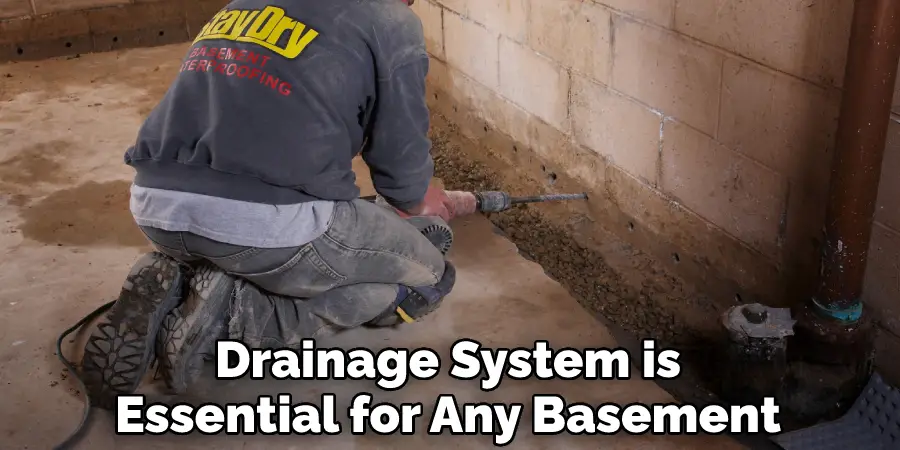
By following these tips and taking the necessary precautionary measures, digging a basement under a house can be done safely and effectively.
How Long Will It Take to Complete the Excavation Work?
The amount of time it takes to complete the excavation will depend on various factors, including the size of the area being excavated, the type of soil and rock present, and the difficulty of access. As a general guide, most excavation jobs can be completed within 4-10 weeks. The larger or more complicated the project may require more time.
It is important to ensure that you have the right tools, personnel, and equipment in place before beginning the excavation work. Using quality materials and having an experienced team on hand will help speed up the process and reduce mistakes. Additionally, it is also essential to hire an engineer or soil specialist to inspect the area for safety codes and regulations.
How Can You Protect Your House From Water Damage and Flooding Risks?
- Check the soil conditions of your area before starting to dig a basement under your house. Understand local building codes, zoning regulations, and other requirements for building a basement in an existing house.
- Examine the drainage around your home, including cracks in foundations and slopes that could cause groundwater buildup near the house. Make sure all gutters and downspouts are clear and in good working order.
- Install a sump pump in your basement, connected to outside drainage or an underground pipe system, to help prevent flooding.
- Place an impermeable membrane between the soil and the basement walls, waterproofing the area before you start digging.
- Dig down carefully and cautiously, making sure to shore up the sides of the excavation as you go to avoid any collapse or cave-ins.
- Once the basement walls are in place, lay a waterproofing material on top to keep out moisture and water.
- Install a sump pump and drainage systems to help redirect water away from the house and basement in case of flooding.
- Ensure proper ventilation and insulation are installed while ensuring all electrical wiring and plumbing are up to code.
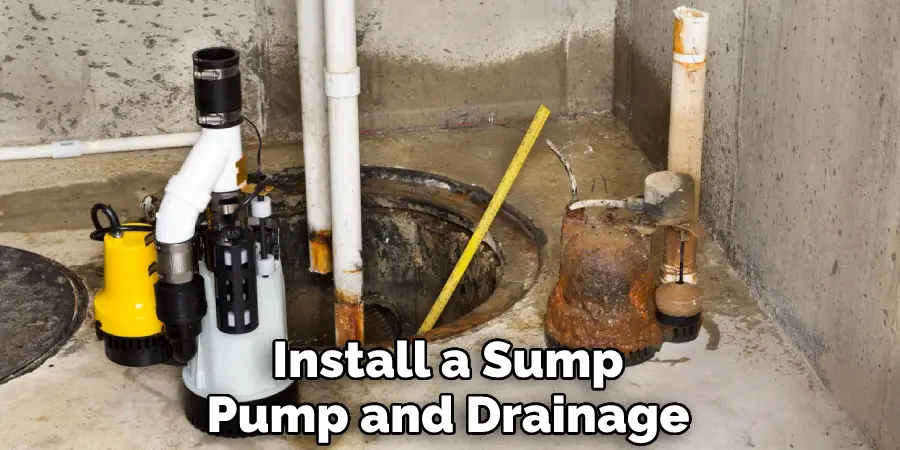
Following these steps can help protect your house from water damage and flooding risks when digging a basement underneath it.
Conclusion
In conclusion, digging a basement under your house is no easy task. It requires careful planning and measurement, as well as a lot of hard work and dedication. But with proper preparation, an experienced contractor, and the right tools, you can successfully dig a basement under your home quickly, safely, and affordably.
The extra space in the newly excavated area can be used to expand living space, store belongings, or create a cool entertaining spot. With the right amount of effort and planning, you can easily get a great new basement in your home. I hope reading this post has helped you learn how to dig a basement under a house. Make sure the safety precautions are carried out in the order listed.

